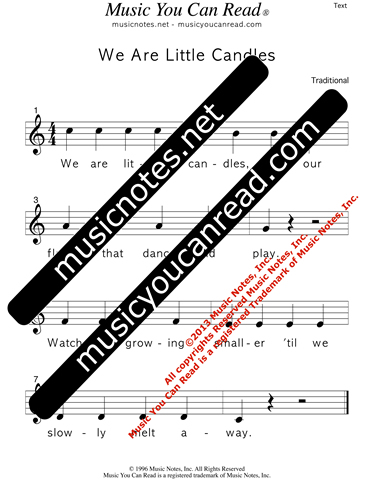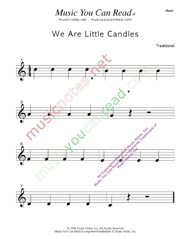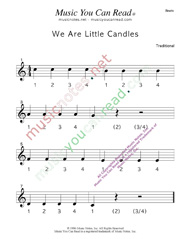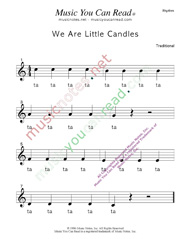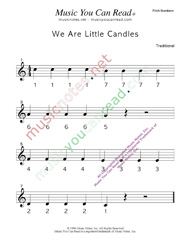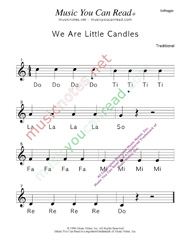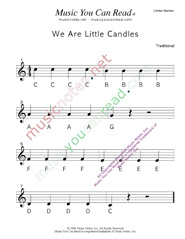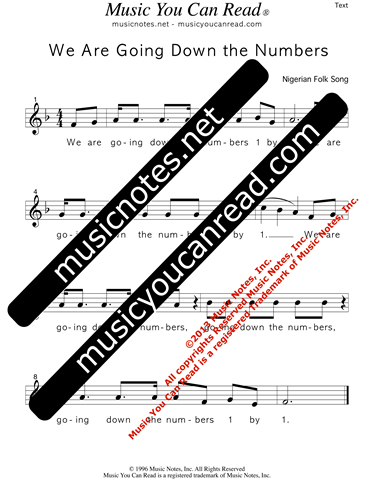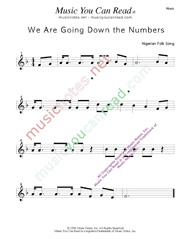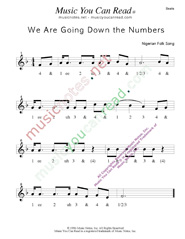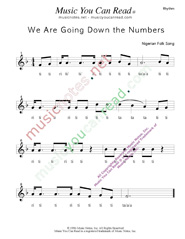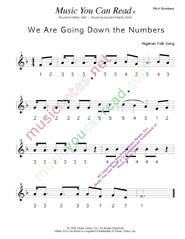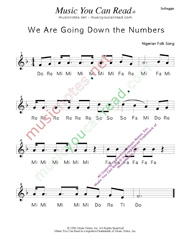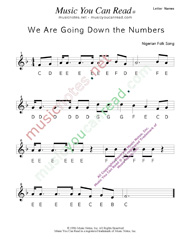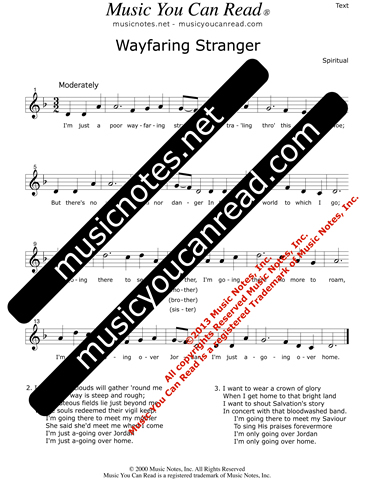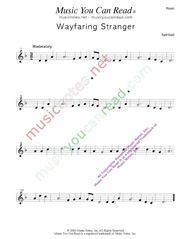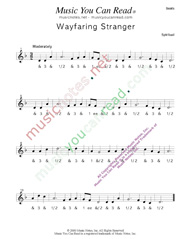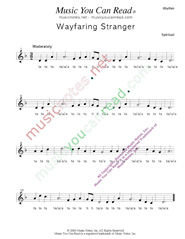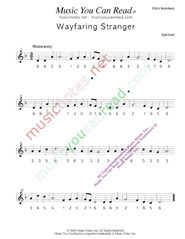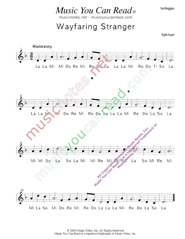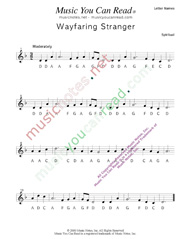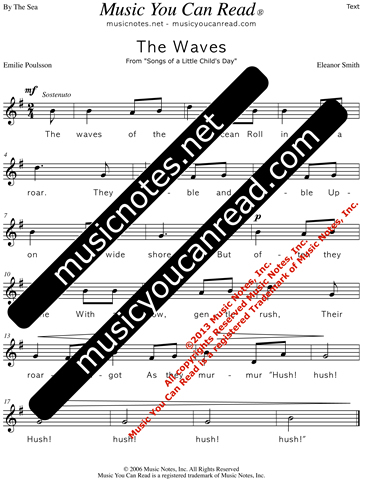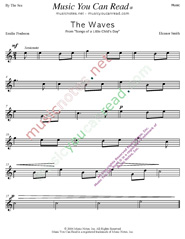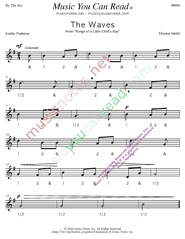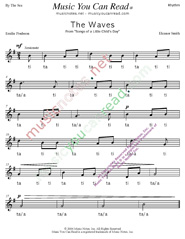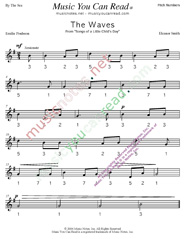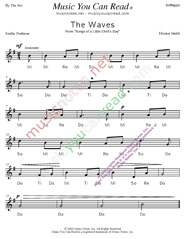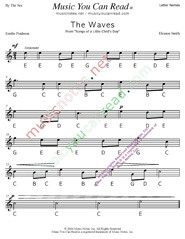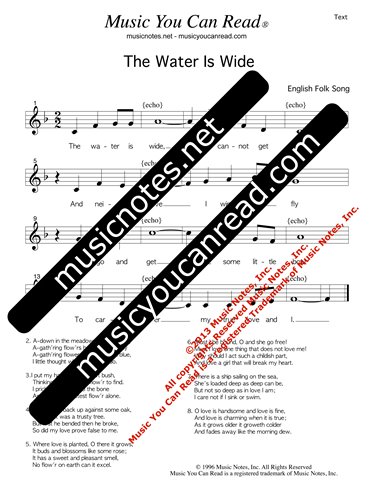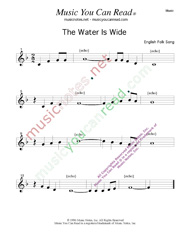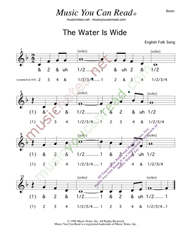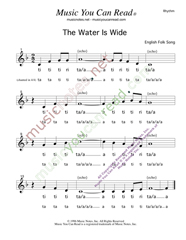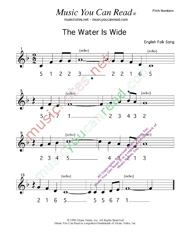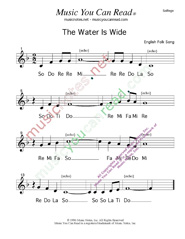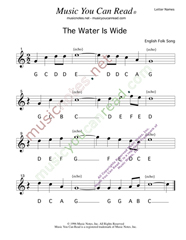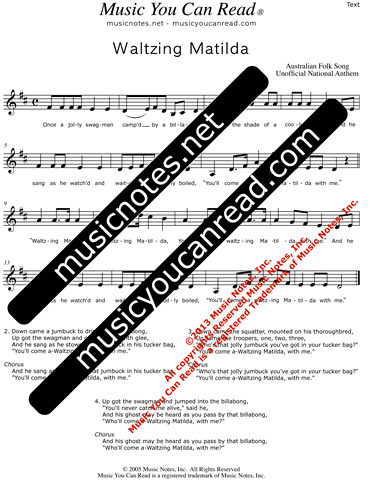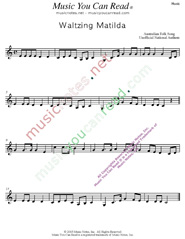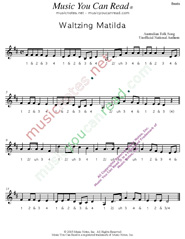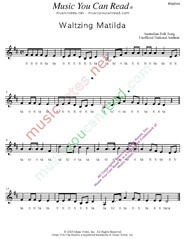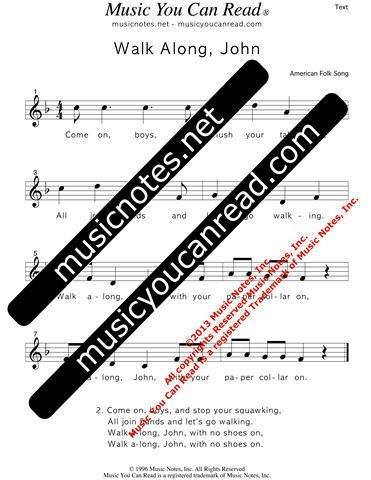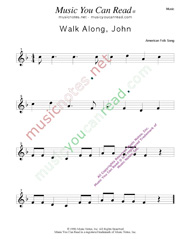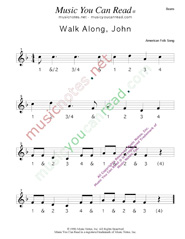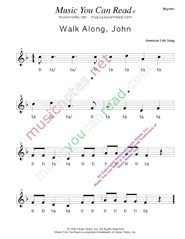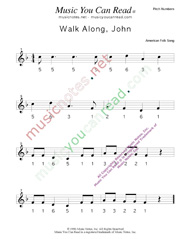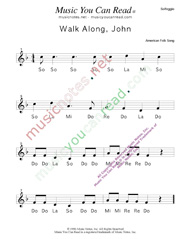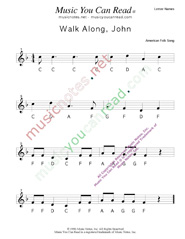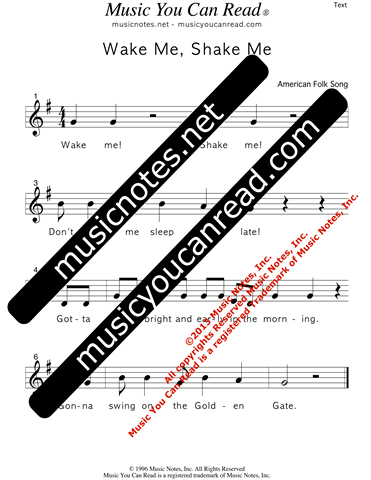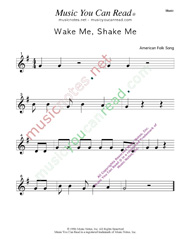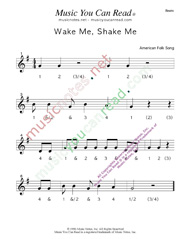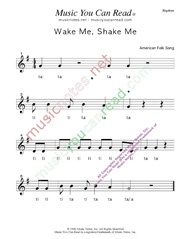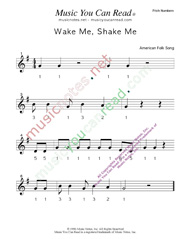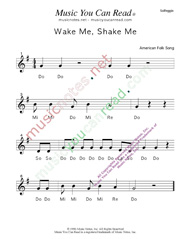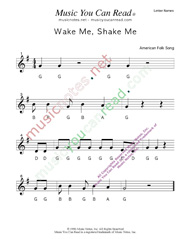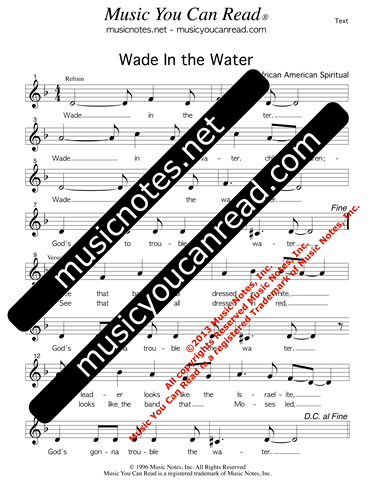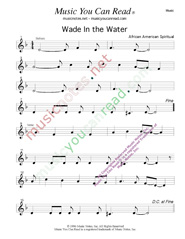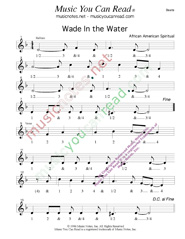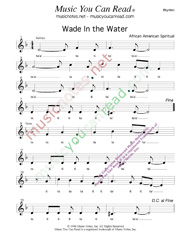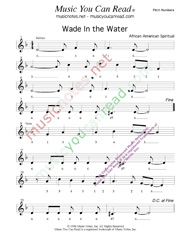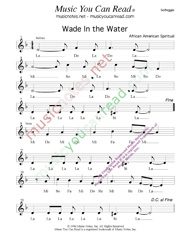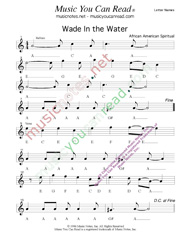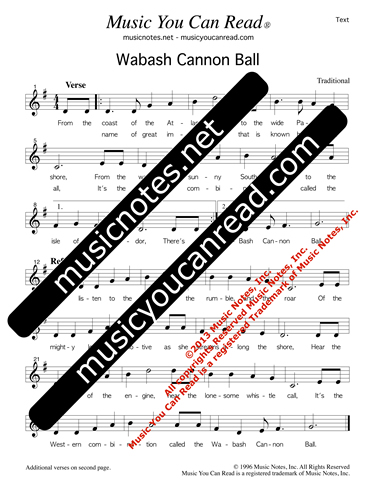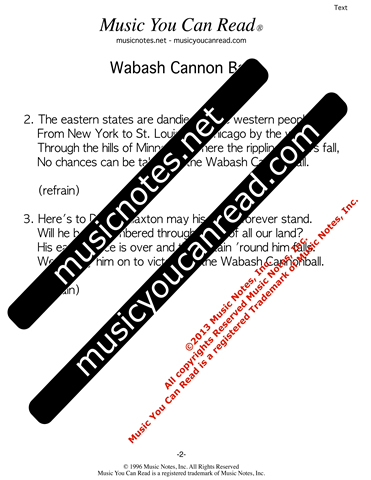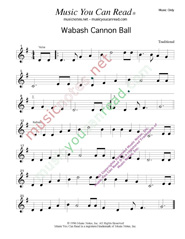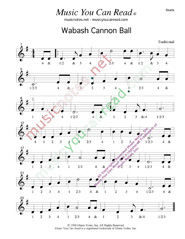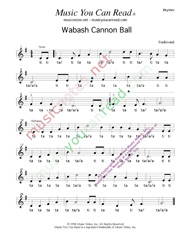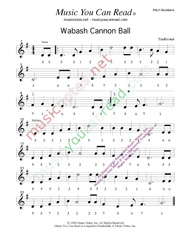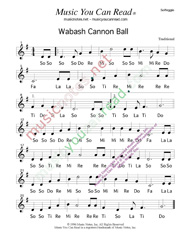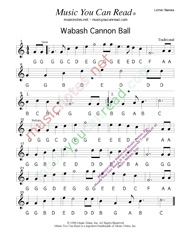- Grade: Fifth
- Origin: Australia – Banjo Paterson, 1895 – (unofficial National Anthem)
- Key: D Major
- Time: Common Time (4/4)
- Form: AB – verse/refrain
- Rhythm: beginners: | ti ti ti ti ta ta | ti ti ti ti ti ti ta |
| ta ti/ ri ta ti ti | syncopation, | ti ti ta ta ti ti |
| ta ti ti ta ta | ta ti ti ta (ta) | ta ti/ ri ta ta | syncopation, | ta ti/ ri ta ti/ ri | syncopation,
| ta ti ti ta ti ti | ta ti ti ta/a |
- Pitches: intermediate: So La Ti Do Re Mi Fa So La Ti Do – extended range
- Intervals: intermediate: Mi\Do\La descending submediant arpeggio (vi,Bm) Do\So (P4), So/Do/Mi/So8ascending tonic arpeggio (I, D), So\Mi (m3), Mi/Do8(d6, diminished sixth)
- Musical Elements: notes: half, quarter, dotted eighth, eighth, sixteenth; rest: quarter; syncopation, tonic and submediant arpeggios, diminished sixth (d6), two double barlines, vocal slur, melodic rhythm patterns
- Key Words: world geography: Australia; Australian vocabulary: swag (portable shelter that is rolled (usually with belongings inside) and carried on a person’s back), swagman (temporary worker, who travelled by foot carrying the traditional swag), Matilda (bag carried over one’s back), billabong (backwater river branch/stagnant pool), coolibah tree (Eucalyptus tree), billy (pot for boiling water), jumbuck (sheep), tucker bag (lunch/dinner bag), squatter (temporary landlord); holiday: Halloween; grabbed, glee, stowed, mounted, thoroughbred (horse), catch, ghost; contractions: you’ll (you will), who’s (who is), who’ll (who will), you’ve (you have); abbreviations: camp’d (camped), watch’d (watched)

“Waltzing Matilda”
|
|
|
|
|
|
|
|
1. |
Once a jolly swagman camp’d by a billabong
Under the shade of a coolibah tree.
And he sang as he watch’d and waited till his billy boiled,
“You’ll come a waltzing Matilda, with me.” |
|
|
|
|
|
Refrain: |
|
|
|
|
|
“Waltzing Matilda, waltzing Matilda,
You’ll come a waltzing Matilda with me.”
And he sang as he watch’d and waited till his billy boiled,
“You’ll come a waltzing Matilda with me.” |
|
|
|
|
2.
|
Down came a jumbuck to drink at the billabong,
Up got the swagman and grabbed him with glee,
And he sang as he stowed that jumbuck in his tucker bag,
“You’ll come a-Waltzing Matilda, with me.” |
|
|
|
|
|
“Waltzing Matilda, waltzing Matilda,
You’ll come a waltzing Matilda with me.”
And he sang as he stowed that jumbuck in his tucker bag,
“You’ll come a-Waltzing Matilda, with me.” |
|
|
|
|
3. |
Down came the squatter, mounted on his thoroughbred,
Up came the troopers, one, two, three,
“Who’s that jolly jumbuck you’ve got in your tucker bag?”
You’ll come a-Waltzing Matilda, with me.” |
|
|
|
|
|
“Waltzing Matilda, waltzing Matilda,
You’ll come a waltzing Matilda with me.
Who’s that jolly jumbuck you’ve got in your tucker bag?
You’ll come a-Waltzing Matilda, with me.” |
|
|
|
|
4. |
Up got the swagman and jumped into the billabong,
“You’ll never catch me alive,” said he,
And his ghost may be heard as you pass by that billabong, “Who’ll come a-Waltzing Matilda, with me?” |
|
|
|
|
|
“Waltzing Matilda, waltzing Matilda,
You’ll come a waltzing Matilda with me.”
And his ghost may be heard as you pass by that billabong, “Who’ll come a-Waltzing Matilda, with me?” |
|
|
|
|
|
|
|
|
Additional Formats (click to enlarge)
pitch numbers
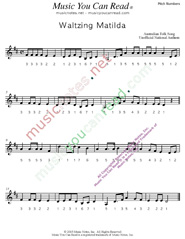 |
solfeggio
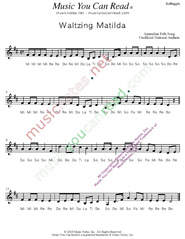 |
letter names
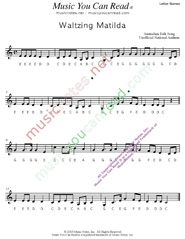 |
